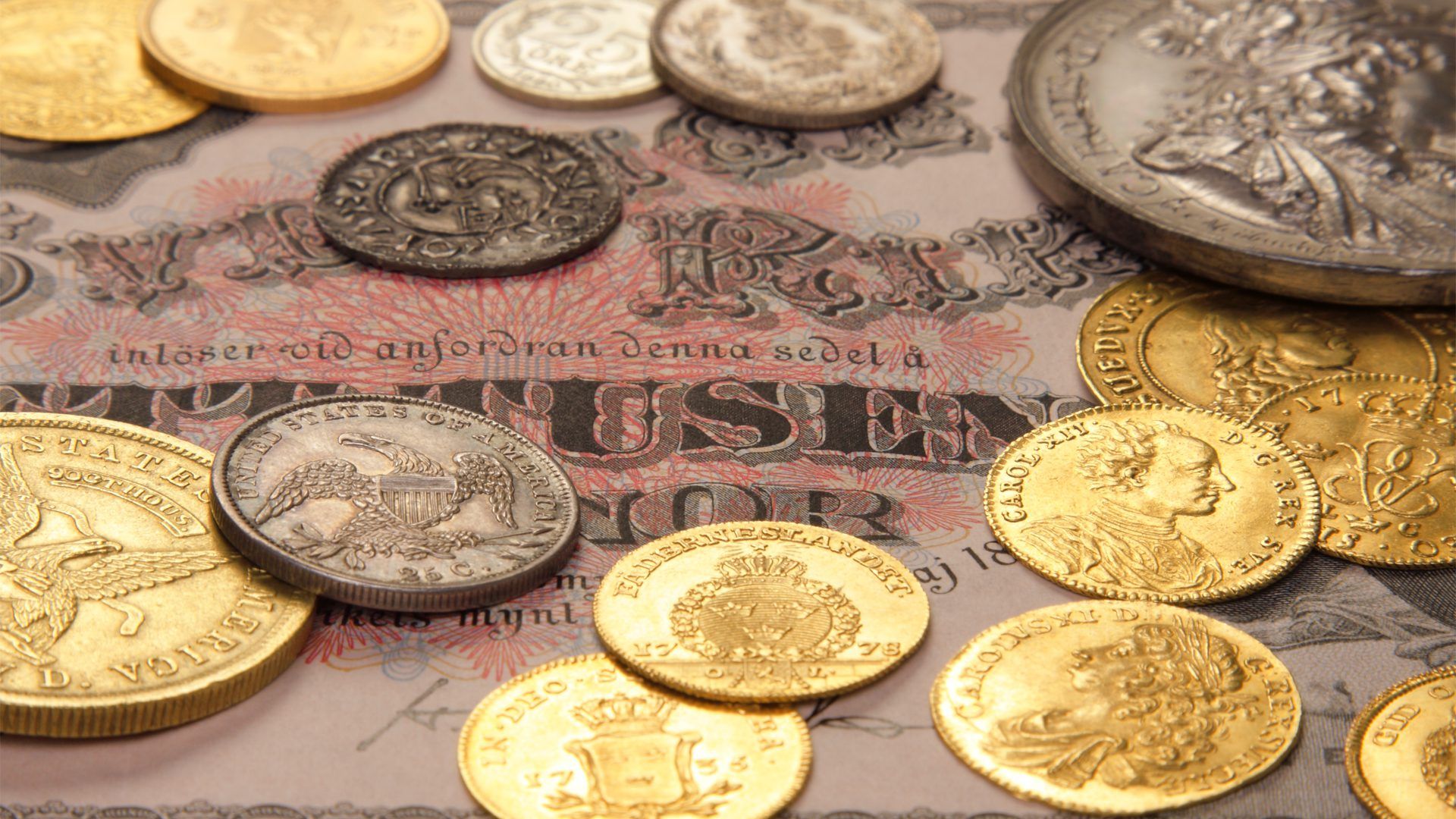The Wexiö Gymnasii Coin Collection
- Permanent exhibition
- Smålands museum

At several Swedish gymnasiums, coins and medal collections were founded during the late 18th and early 19th centuries. For example, the foundation of the Wexiö gymnasii coin collection belonging to the Småland’s museum was laid on the 4th of September 1792. Adolph Modéer, secretary in the Royal Patriotic Society, donated an extensive collection of coins to Bishop Olof Wallqvist and Växjö gymnasium on this day. During the 19th century, the coins became a supplement to teaching in cathedral schools, gymnasiums, and textbooks.
The moving coin collection
Over the years, the coin collection has been moved and had to change its exhibition location several times. The collection’s first location was in 1792 in the tower of Växjö Cathedral. However, in 1864, the space had become too crowded, and the collection was moved to the nearby gymnasium.
In 1899, the collection was sent to the newly built school Högre allmänna läroverket in Växjö. First, the collection got a classroom of its own. However, when the room was later needed as a classroom, the collection was relegated to a furnished basement room at the educational institution.
The coin collection is coming to Småland’s museum.
During the expansion of Småland’s museum in 1934-1935, the museum’s coin collections and the school Högre allmänna läroverket in Växjö were brought together, and an exhibition of the coins was organized in one of the museum’s corridors.
Despite new premises, the coin collection displays left the collection mostly unprotected, and after a series of thefts in the 1960s, a special coin collection was set up in the northern part of the museum’s old hall. The new exhibition was fitted with a vault door and the necessary safety devices.
The great theft
Like several other coin collections, the Wexiö gymnasii coin collection has been subject to theft over many years. However, the first and perhaps most significant theft was already committed at the beginning of the 19th century.
When the newly appointed bishop Ludvig Mörner was visited by his brother, Colonel Carl Mörner, on the 12th of March 1804, they planned to see Bishop Olof Wallquist’s famous library and coin collection together. The accompanying teacher/librarian assisted at the coin lockers, “pulling out one drawer after another. All were empty”. What was now revealed was a devastating and extensive looting, and those who carried out the looting were two students at the school.
The valuable coins were stored relatively simply, and the two students could easily seize the library keys and keys to the coin safe to steal gold and silver coins. The thefts took place during the years 1803-1804. The perpetrators stole around 800 numbers, all gold and almost all silver coins. The stolen goods were sold to various goldsmiths in Växjö, and when the precious metals ran out, even a coppersmith had been the recipient of stolen goods. The young men had enjoyed themselves in Europe for the money, and when the crimes were discovered, one managed to flee the country, while the other had to endure both caning and public humiliation.
After the thefts, the coin collection was restored, and in around 1811, a new collection was created that could at least numerically compare with the one that existed before.
About 40,000 items
We have three generations of zealots to thank for the Wexiö gymnasii coin collections’ survival despite being moved, packed down, archived, unpacked, and several severe thefts. The three are Samuel Edvard Melander, Hilding Rundqvist, and Gunnar Sundberg, all teachers at the educational institution. They looked after, cataloged, and enriched the collection between the years 1881 to 1997.
Today, the coin collection houses 40,000 objects and an extensive numismatic library. The Småland museum’s collection of coins is one of the country’s finest, both qualitatively and quantitatively. The exhibition vault displays coins, banknotes, and medals from the 6th century BCE to the present day.
Among the notable donors to the coin collection is the soprano Kristina Nilsson, who posthumously donated 132 coins and medals, of which 61 were gold.
All texts in the exhibition are presented in swedish, how ever, some brief parts are presented in english and in german.